FILMS / 1980-2013
I'm Here It's Me Can You See / 25 mins / HD 1920x1080 / ©2013 >
There was a Little Girl / 25 mins / NTSC 720 x 480 / ©2010 >
Go to Hell / 7.5 mins / 16mm / ©1994 >
Covered in Fleas / 4.5 mins / 16mm / ©1988 >
One Nation Under TV / 2.5 mins / 16mm / ©1985 >
I arrived in New York from Sydney, Australia, in October 1978. I had recently graduated from art school. I spent the first couple of years wandering around the city, checking out everything — art, music, performance, film — largely the downtown scene and also the museums. I had some low level jobs, like waitress in a pizza place, but I quit when I discovered fresh shit in the stairwell on my second day. Eventually I lucked into some graphic design work. Nothing inspiring, but enough to support myself.
My friend and art school roommate, Jo Bonney, arrived in New York in 1979. We were both living in hovels and decided to find our own apartment. It was the beginning of real estate prices escalating and apartments becoming scarce, at least within our price range. After a long search we found an apartment on East 13th Street for what seemed like too much money: $300 a month, a significant increase from the $50 I had been paying. It was a rough block. Taxi Driver had been shot there a few years earlier. And it was still like it was depicted in the film. Drug dealers and prostitutes earned their livings there. We were the first gentrifiers to move into our building. Any dangers didn’t seem much different from anywhere in the city at that time, so we didn’t worry about it. We furnished the apartment with discarded furniture we found on the street and bought the rest from thrift stores, dragging the heavy objects many blocks and up to the fourth floor. I was clearly staying in New York, so I trashed the return portion of my plane ticket.
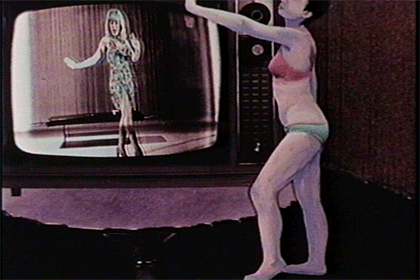 It was 1980 and we were both ready to do a project of our own. We had collaborated on an animated film in art school and decided to make another. We hashed around ideas, and decided we would examine the tedium of a traditional woman’s role of marriage, housework and children. We grew up in an era with those expectations and we were trying to leave them behind. Another Great Day is dated now, but at the time it was unexpectedly successful. It was screened in theaters and film festivals in New York and all over the world.
It was 1980 and we were both ready to do a project of our own. We had collaborated on an animated film in art school and decided to make another. We hashed around ideas, and decided we would examine the tedium of a traditional woman’s role of marriage, housework and children. We grew up in an era with those expectations and we were trying to leave them behind. Another Great Day is dated now, but at the time it was unexpectedly successful. It was screened in theaters and film festivals in New York and all over the world.
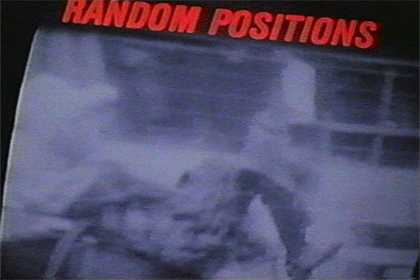 Because of the success of Another Great Day, we applied for grants to make another film and received one from The Jerome Foundation. We made Random Positions in 1983. Once again we drew the idea from discussions we were having about our lives. This film is an exaggerated view of destructive behavior in relationships, from the absurd ritual of flirting, to the even more painful side: insecurity, possessiveness and jealousies.
Because of the success of Another Great Day, we applied for grants to make another film and received one from The Jerome Foundation. We made Random Positions in 1983. Once again we drew the idea from discussions we were having about our lives. This film is an exaggerated view of destructive behavior in relationships, from the absurd ritual of flirting, to the even more painful side: insecurity, possessiveness and jealousies.
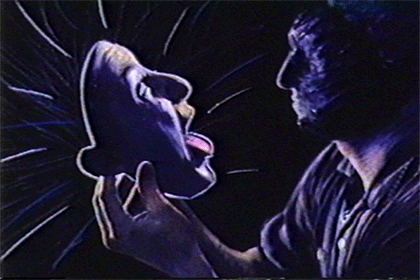 By the mid-1980’s I was playing in Bump, a no wave band. MTV and music videos were taking off with mainstream bands. I made a music video of one of our songs. MTV wasn’t interested but One Nation Under TV screened at numerous film festivals.
By the mid-1980’s I was playing in Bump, a no wave band. MTV and music videos were taking off with mainstream bands. I made a music video of one of our songs. MTV wasn’t interested but One Nation Under TV screened at numerous film festivals.
The song’s lyrics were written by the bass player, Mike Sappol:
We are one nation under TV / Theocracy
of inanity / These amber waves of passivity
get to me / From sea to shining sea of
color TV / We are one nation divided by TV /
Bathed in amber waves of inanity / From tube
to tube to shining tube / When I’m alone:
Aren’t you glad you use Dial? / We are one
nation under a Red, White and Blue and Green
Flag / The national intellect begins to sag
Into a Trinitron easy chair / Oh I don’t care,
I don’t care, I don’t care / the air, the air,
the world’s a hard place, / the air is here,
the air is thick and rife with entertainment, /
oh I don’t know what’s on outside / there
isn’t anything good on
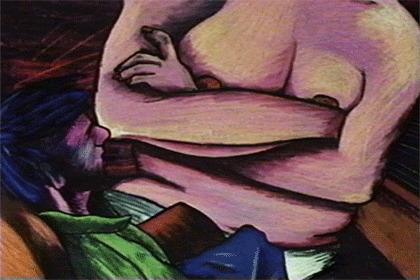 In 1988 I completed Covered in Fleas, a film about a dysfunctional couple: the woman tiptoed around her partner, a TV addict, who continually found excuses not to get a job. In addition to exploring this stereotypical gender dynamic, I attempted to exaggerate the characters, referencing old cartoons but in a contemporary context. Up until this point my films were hand colored sequential photos and photomontages. I wanted to try my hand at making a film that was all hand drawn.
In 1988 I completed Covered in Fleas, a film about a dysfunctional couple: the woman tiptoed around her partner, a TV addict, who continually found excuses not to get a job. In addition to exploring this stereotypical gender dynamic, I attempted to exaggerate the characters, referencing old cartoons but in a contemporary context. Up until this point my films were hand colored sequential photos and photomontages. I wanted to try my hand at making a film that was all hand drawn.
I had my first daughter, Nell, in 1989. Then, in the early 1990s I had a stroke of luck. I received a hefty grant from the Independent Television Service (ITVS). It was their first year of funding and in addition to documentaries, they funded four animators. The grant allowed me to use my free time or what little of it I had, to work on a new film. I had worked like crazy in a design studio when I was pregnant so I also had some money saved that tied me through. Go to Hell took a few years to make. I finished it in 1993, hugely pregnant, and just in the nick of time before Eve was born.
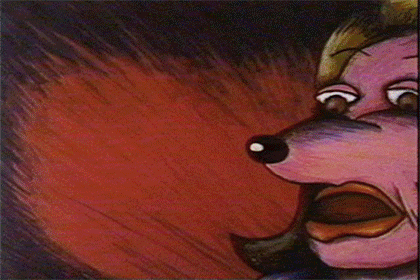 In April 1989, pregnant with Nell, I went to Washington for the March for Women’s Equality. The Supreme Court was considering a case that could threaten Roe v. Wade. This march to support abortion rights was one of the biggest Washington had seen. It instigated the idea for Go to Hell. The film examines how our society imposes control over women’s autonomy and personal choice potentially making us feel powerless, but we don’t need to succumb to these societal pressures. The central character was a pregnant woman who was unsure if she wanted to have the baby. She felt overwhelmed by everyone around her who was trying to make her decision for her: her boyfriend, the Supreme Court, the Right to Lifers. She finally stands up to all of them. The film is dreamlike but hopefully the theme is apparent.
In April 1989, pregnant with Nell, I went to Washington for the March for Women’s Equality. The Supreme Court was considering a case that could threaten Roe v. Wade. This march to support abortion rights was one of the biggest Washington had seen. It instigated the idea for Go to Hell. The film examines how our society imposes control over women’s autonomy and personal choice potentially making us feel powerless, but we don’t need to succumb to these societal pressures. The central character was a pregnant woman who was unsure if she wanted to have the baby. She felt overwhelmed by everyone around her who was trying to make her decision for her: her boyfriend, the Supreme Court, the Right to Lifers. She finally stands up to all of them. The film is dreamlike but hopefully the theme is apparent.
The ITVS grant was not only to make the film. It was to produce a 4-part series for PBS, Animated Women; each episode was devoted to one of the grant recipients. So in addition to making Go to Hell, Sybil DelGaudio and Patty Wineapple’s production company made a half hour episode about me and my work that was broadcast nationally. My segment had interviews and showed three of my films. My films often have hand drawn non-sexual female nudity (no penises) but shockingly a number of PBS stations balked at my episode. A few refused to air it, some aired it in the early hours of the morning, and some digitized the cartoon breasts. I guess they didn’t see the irony in censoring my films, which are largely about society’s attempts to subjugate women.
In the mid-1990s my marriage fell apart and I became a single mother with 2 young daughters and no time to continue my film work. I ended up in just the situation I had explored in so much of my work. The one thing I maintained was aikido, not only because it was an integral part of my life and I loved it, but also because there were classes that I could routinely attend each day. They cleared my head and the physical activity was a great release.
Being a mother was a catalyst to reexamine my own childhood and relationships with my parents and my brother. Tons of memories came flooding back. I wrote about them and created a body of work of personal stories about my life.
When my kids were teenagers I had more free time, so I picked up my life as an artist. As I had been doing my graphic design work on a computer for many years, I could make a film without too much financial investment. My early films were expensive; tons of art supplies and 16mm film shot on an animation stand camera that I rented, a huge beast that filled half a room. Now all I needed to invest in was sound recording software and an animation program. I already had Photoshop and other programs, and there was no cost of film and film processing. I had a powerful Mac. I was set.
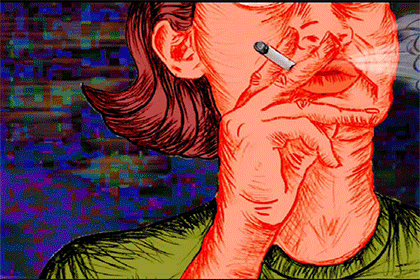 The wealth of personal writing that had accumulated during those years was the foundation of my next film. There was a Little Girl was an autobiographical film spanning fifty years, from 1959 to 2009.
I tell six stories from my life set ten years apart, each on a backdrop of political and social events of that year. The film explores the relationships of three generations of women in my family using animation and manipulated found images. Working on that film was therapeutic. Over the years I didn’t produce any work I frequently worried that it was the end of my life as an artist. But it was the opposite. I loved making that film. I was more than just an exhausted and overwhelmed mother. I used the film to express some of the realizations I had in my years of parenting my wonderful children.
The wealth of personal writing that had accumulated during those years was the foundation of my next film. There was a Little Girl was an autobiographical film spanning fifty years, from 1959 to 2009.
I tell six stories from my life set ten years apart, each on a backdrop of political and social events of that year. The film explores the relationships of three generations of women in my family using animation and manipulated found images. Working on that film was therapeutic. Over the years I didn’t produce any work I frequently worried that it was the end of my life as an artist. But it was the opposite. I loved making that film. I was more than just an exhausted and overwhelmed mother. I used the film to express some of the realizations I had in my years of parenting my wonderful children.
One thing I didn’t count on was how the film world had changed. It used to be that independent film festivals showed modest films by filmmakers like me. My early films were accepted in many festivals, and often by invitation from one festival to another. There weren’t entry fees, and sometimes there were stipends. But the festivals now demanded hefty entry fees and stiff competition. There was a Little Girl was accepted to a small number of festivals, and rejected by many with form letters saying things like: “We had an unusually large number of submissions to our festival this year, over 5,000. We have slots for 75 films but yours wasn’t one of them. But thanks for the entry fee.” Also many of these festivals were showing independent films by big name directors who somehow fell into the category of “independent.” It didn’t completely deter me. I love making films so I wanted to continue.
There was a Little Girl took many years to complete as I didn’t have much free time to devote to it. I applied for grants for a new film using it as my sample. I was awarded grants from The New York State Council on the Arts (NYSCA) and The Jerome Foundation to make I’m Here It’s Me Can You See. I found it odd that There was a Little Girl didn’t get into many festivals but it was a major factor in being awarded these highly competitive grants.
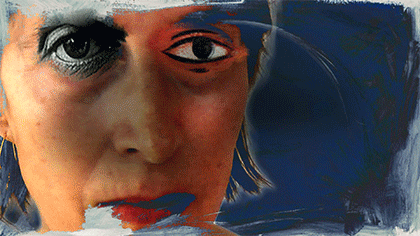 I grew up with an aunt with Parkinson’s Disease and was terrified of her as a child. My friend, Pamela Quinn, who is a professional dancer, was diagnosed with Parkinson’s Disease at age 40. I’m Here It’s Me Can You See explores the effects chronic illness has on people’s lives through the stories of these two women. The film was accepted into a few festivals.
I grew up with an aunt with Parkinson’s Disease and was terrified of her as a child. My friend, Pamela Quinn, who is a professional dancer, was diagnosed with Parkinson’s Disease at age 40. I’m Here It’s Me Can You See explores the effects chronic illness has on people’s lives through the stories of these two women. The film was accepted into a few festivals.
I create work because I love doing it but it’s important for the work to be seen. I tell stories through my films that express thoughts and ideas for an audience. Making a film is very labor intensive. It’s discouraging when my work is seen by very few people. Currently I am exploring other mediums for my stories: Oral storytelling, written stories and interviews. I still love making films and perhaps I will make another in the future. I hope so.